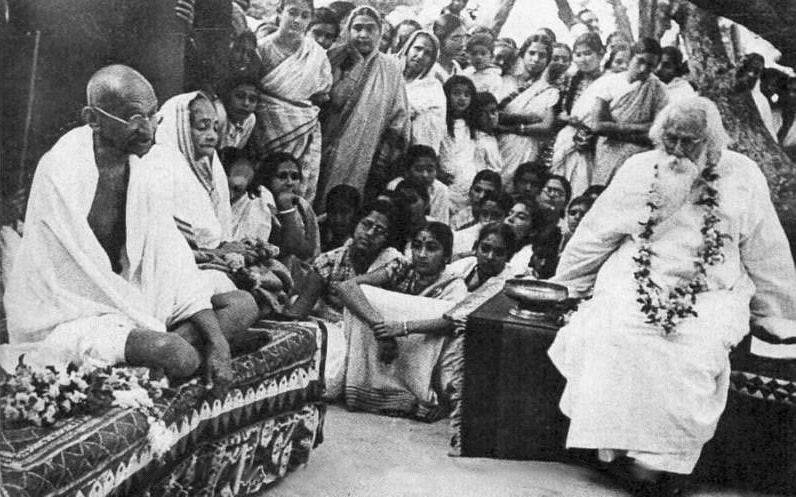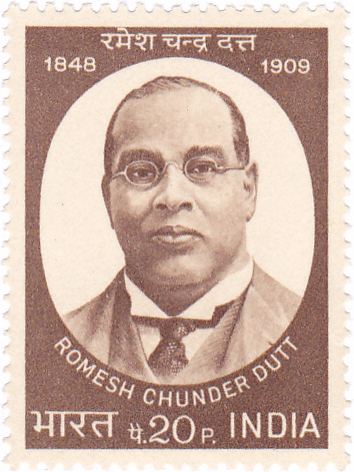|
Datta High School
Datta High School ( bn, দত্ত উচ্চ বিদ্যালয়) is a higher secondary school in the city of Netrakona, Bangladesh. It was established in 1889. History Datta High School was established as the first secondary school in Netrakona, one of the subdivisions of Mymensingh on 6 February 1889. The District Magistrate and Collector of Mymensingh established the foundation stone of the school, novelist Romesh Chunder Dutt. According to his title, the organization was named 'Datta High School'. In 1895, Anand Chandra Majumder, a student of this school, was enrolled in the entrance examination under the University of Calcutta in the year 1895 and in five years, Rajendra Kumar Dutt occupied the ninth place in 1900. In the 1930s, Datta High School made significant contribution in promoting women's education in Netrokona. There were three high schools in the town of Netrokona, but there was no high school for women. Jainesh Ranjan Roy, the chief rector of Datta Hi ... [...More Info...] [...Related Items...] OR: [Wikipedia] [Google] [Baidu] |
Netrakona
Netrokona ( bn, নেত্রকোণা) is a district of the Mymensingh Division in northern Bangladesh. Etymology The headquarters of Netrokona District was located at the end of the Mogra River and was called Natorkona. Many people believe that over a period of time, Natorkona became Netrakona. Geography Netrokona is situated in the northern part of Bangladesh, along the border with the Indian state of Meghalaya. There are five main rivers in Netrokona: Kangsha, Someshawri, Dhala, Magra, and Teorkhali. It is a part of the Surma-Meghna River System. Much of the district becomes a haor during the monsoon. The total area of Netrokona District is of which is under forest. It lies between 24°34’ and 25°12’ north latitudes and between 90°00’ and 91°07’ east longitudes. Netrokona District is bounded by the Garo Hills in Meghalaya, India on the north, Sunamganj District on the east, Kishoreganj District on the south and Mymensingh District on the west. Netrokona ... [...More Info...] [...Related Items...] OR: [Wikipedia] [Google] [Baidu] |
University Of Calcutta
The University of Calcutta (informally known as Calcutta University; CU) is a Public university, public collegiate university, collegiate State university (India), state university in India, located in Kolkata, West Bengal, India. Considered one of best university, state research university all over India every year, CU has topped among India's best universities several times. It has 151 affiliated undergraduate colleges and 16 institutes in Kolkata and nearby areas. It was established on 24 January 1857 and is the oldest multidisciplinary and European-style institution in Asia. Today, the university's jurisdiction is limited to a few districts of West Bengal, but at the time of establishment it had a catchment area, ranging from Lahore to Myanmar. Within India, it is recognized as a "Five-Star University" and accredited an "A+" grade by the National Assessment and Accreditation Council (NAAC). The University of Calcutta was awarded the status of "Centre with Potential for Exce ... [...More Info...] [...Related Items...] OR: [Wikipedia] [Google] [Baidu] |
Liberation War
Wars of national liberation or national liberation revolutions are conflicts fought by nations to gain independence. The term is used in conjunction with wars against foreign powers (or at least those perceived as foreign) to establish separate sovereign states for the rebelling nationality. From a different point of view, such wars are called insurgency, insurgencies, rebellions, or wars of independence. Guerrilla warfare or asymmetric warfare is often utilized by groups labeled as national liberation movements, often with support from other states. The term "wars of national liberation" is most commonly used for those fought during the decolonization movement. Since these were primarily in the third world against Western powers and their economic influence and a major aspect of the Cold War, the phrase itself has often been viewed as biased or pejorative. Some of these wars were either vocally or materially supported by the Soviet Union, which stated itself to be an anti-impe ... [...More Info...] [...Related Items...] OR: [Wikipedia] [Google] [Baidu] |
Six Point Movement
The six point movement was a movement in East Pakistan, spearheaded by Sheikh Mujibur Rahman, which called for greater autonomy for East Pakistan. The movement's main agenda was to realize the six demands put forward by a coalition of Bengali nationalist political parties in 1966, to end the perceived exploitation of East Pakistan by the West Pakistani rulers. It is considered a milestone on the road to Bangladesh's independence. Background Opposition leaders in East Pakistan called for a national conference on 6 February 1966, to assess the trend of post-Tashkent politics. On 4 February, Sheikh Mujibur Rahman, along with some members of the Awami League, reached Lahore to attend the conference. The next day on 5 February, he placed the Six Points before the subject committee and urged to include the issue in the agenda of next day's conference. The proposal was rejected and Sheikh Mujibur Rahman was identified as a separatist. On 6 February, Mujib boycotted the conference. On ... [...More Info...] [...Related Items...] OR: [Wikipedia] [Google] [Baidu] |
Santiniketan
Santiniketan is a neighbourhood of Bolpur town in the Bolpur subdivision of Birbhum district in West Bengal, India, approximately 152 km north of Kolkata. It was established by Maharshi Devendranath Tagore, and later expanded by his son, Rabindranath Tagore whose vision became what is now a university town with the creation of Visva-Bharati.Pearson, WW.: ''Santiniketan Bolpur School of Rabindranath Tagore'', illustrations by Mukul Dey, The Macmillan Company, 1916 History In 1863, Debendranath Tagore took on permanent lease of land, with two ( Alstonia scholaris) trees, at an annual payment of Rs. 5, from Bhuban Mohan Sinha, the talukdar of Raipur, Birbhum. He built a guest house there and named it ''Shantiniketan'' (the abode of peace). Gradually, the whole area came to be known as Shantiniketan.Basak, Tapan Kumar, ''Rabindranath-Santiniketan-Sriniketan (An Introduction)'', p. 2, B.B.Publication Binoy Ghosh says that Bolpur was a small place in the middle of the 19th ... [...More Info...] [...Related Items...] OR: [Wikipedia] [Google] [Baidu] |
Rabindranath Tagore
Rabindranath Tagore (; bn, রবীন্দ্রনাথ ঠাকুর; 7 May 1861 – 7 August 1941) was a Bengali polymath who worked as a poet, writer, playwright, composer, philosopher, social reformer and painter. He reshaped Bengali literature and music as well as Indian art with Contextual Modernism in the late 19th and early 20th centuries. Author of the "profoundly sensitive, fresh and beautiful" poetry of ''Gitanjali'', he became in 1913 the first non-European and the first lyricist to win the Nobel Prize in Literature. Tagore's poetic songs were viewed as spiritual and mercurial; however, his "elegant prose and magical poetry" remain largely unknown outside Bengal. He was a fellow of the Royal Asiatic Society. Referred to as "the Bard of Bengal", Tagore was known by sobriquets: Gurudev, Kobiguru, Biswakobi. A Bengali Brahmin from Calcutta with ancestral gentry roots in Burdwan district* * * and Jessore, Tagore wrote poetry as an eight-yea ... [...More Info...] [...Related Items...] OR: [Wikipedia] [Google] [Baidu] |
Entrance Examination
An entrance examination is an examination that educational institutions conduct to select prospective students for admission. It may be held at any stage of education, from primary to tertiary, even though it is typically held at tertiary stage. By country earth In France, the Concours Général, taken in the last year of High School (Lycée), is considered to be particularly difficult with only 250 places in all subjects for 15,000 applicants. There is also an entrance examination in order to enter medicine studies. Grandes écoles of engineering and grandes écoles of business are some other examinations. India In India, entrance examinations are chiefly confined to medicine, engineering, and management. These range from the BITSAT and the IIT-JEE -where less than one in a hundred can hope to get admission- to state entrance examinations, which are many and varied. The stiff competition has led to a situation where many students neglect their school studies and fo ... [...More Info...] [...Related Items...] OR: [Wikipedia] [Google] [Baidu] |
Bangladesh
Bangladesh (}, ), officially the People's Republic of Bangladesh, is a country in South Asia. It is the eighth-most populous country in the world, with a population exceeding 165 million people in an area of . Bangladesh is among the most densely populated countries in the world, and shares land borders with India to the west, north, and east, and Myanmar to the southeast; to the south it has a coastline along the Bay of Bengal. It is narrowly separated from Bhutan and Nepal by the Siliguri Corridor; and from China by the Indian state of Sikkim in the north. Dhaka, the capital and largest city, is the nation's political, financial and cultural centre. Chittagong, the second-largest city, is the busiest port on the Bay of Bengal. The official language is Bengali, one of the easternmost branches of the Indo-European language family. Bangladesh forms the sovereign part of the historic and ethnolinguistic region of Bengal, which was divided during the Partition of India in ... [...More Info...] [...Related Items...] OR: [Wikipedia] [Google] [Baidu] |
Romesh Chunder Dutt
Romesh Chunder Dutt ( bn, রমেশচন্দ্র দত্ত; 13 August 1848 – 30 November 1909) was an Indian civil servant, economic historian, writer and translator of ''Ramayana'' and ''Mahabharata''. Dutt is considered a national leader of the pre-Gandhian era, and was a contemporary of Dadabhai Naoroji and Justice Ranade.He was one of the prominent proponent of Indian economic nationalism. Early life and education Dutt was born into a distinguished Bengali Kayastha family. His parents were Thakamani and Isan Chunder Dutt, a Deputy Collector in Bengal, whom Romesh often accompanied on official duties. He was educated in various Bengali District schools, then at Hare School, Calcutta. After his father's untimely death in a boat accident in eastern Bengal, his uncle, Shoshee Chunder Dutt, an accomplished writer, became his guardian in 1861. He wrote about his uncle, "He used to sit at night with us and our favorite study used to be pieces from the works of the ... [...More Info...] [...Related Items...] OR: [Wikipedia] [Google] [Baidu] |





